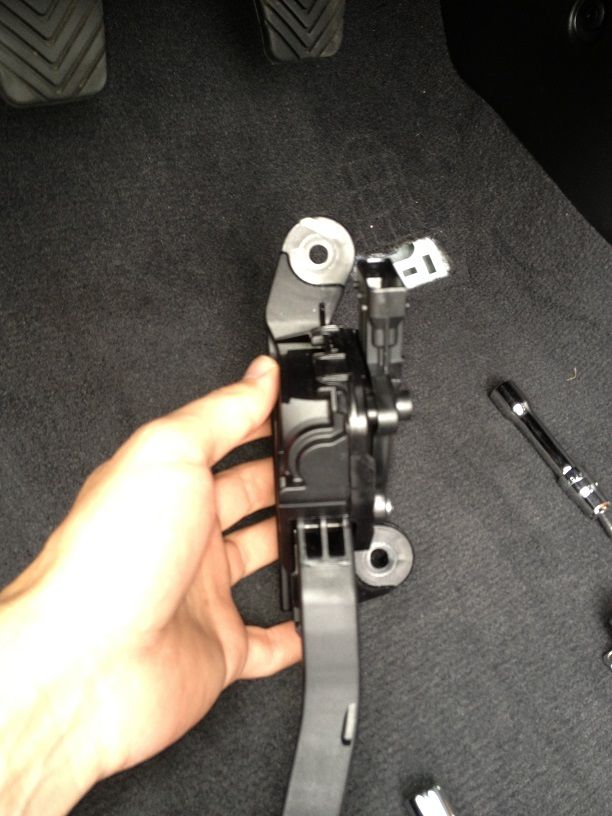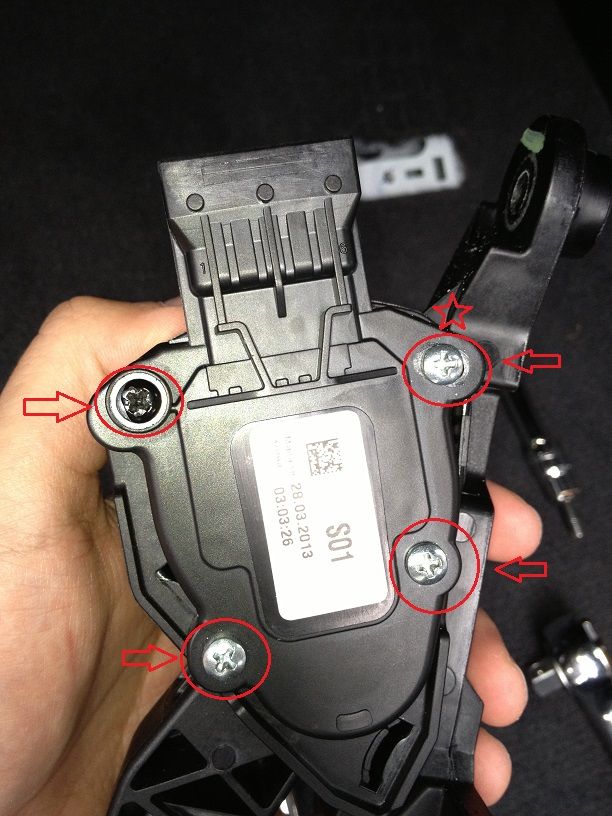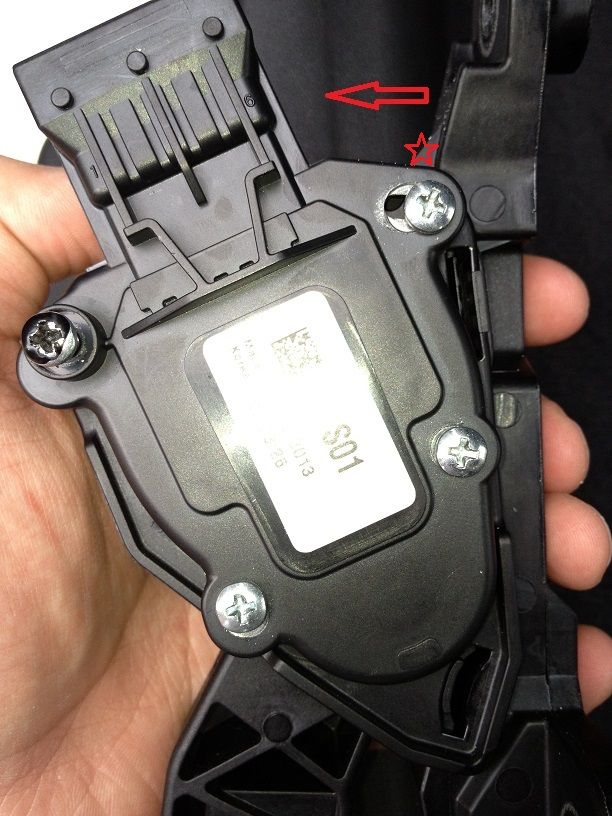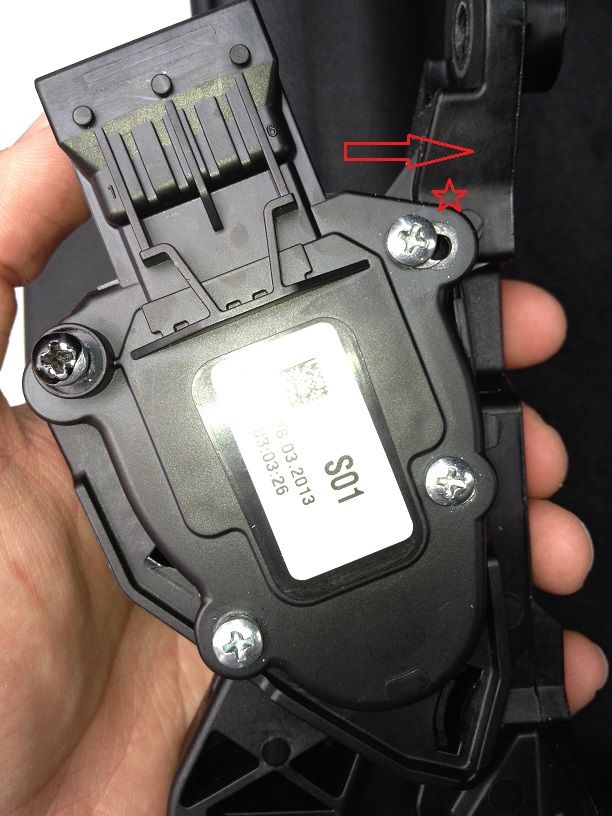so ever since i got the car, i found that it was difficult to get the hang of driving this standard transmission, specifically in this car. This is not my first manual car, so I have good experience. Particularly with my Elantra, i found that the gas pedal was hard to get used too. there was always this delay before the engine would finally start revving up. sometimes that would cause me almost to stall, because clutch was already engaging, but engine did still not rev up, and sometimes when i'm trying to avoid that, i end up over-revving, and i feel like a rookie again.
a few days ago, while checking out some more information regarding the thread: http://www.hyundai-forums.com/269-g...om/269-gd-2013-elantra-gt/169242-problems-shifting-into-3rd-gear-400km-odo.html in the GD section, i came across kia forte forums where there was a thread dedicated to get rid of the dead space in the gas pedal. essentially the space between the gas pedal resting position, and when depressed, the point where the engine finally receives input to rev up.
the idea suggested was to adjust the APS (accelerator position sensor), and of course they had a write up there. luckily a new thread also popped up in the accent forums, you can read here:
http://www.hyundai-forums.com/233-r...2-accent/168873-accelerator-pedal-mod-increase-throttle-opening-percentage.html
and it had a small write up regarding the accent gas pedal. I took a look yesterday at my gas pedal, and the assembly is the same as the accent. So i did the adjustment as the kia forte forums suggested, but with help from the link above.
I did a small write up to show the elantra people how to do this adjustment to get rid of the dead space in the gas pedal.
do this write up at your own risk, i will not be liable for any damage this may cause. note that this is for my own safety, and i dont think that you can screw something up. it can always be returned back to stock.
Tools you'll need:
wrench with 12mm socket and 10mm socket
a philips screwdriver
and possibly a small flat head screwdriver, but fingernails will do too.
1. Start by removing the 10mm bolt, marked in red from the foot of the gas pedal.

2. Proceed to remove the APS plug, marked in green, by pulling out the red tab in the front. also, remove the two 12mm nuts, marked in red.

3. this is how the APS plug looks like after you pull it off. notice how the red tab is suppose to come out. Just putting it because i found that this might stumble some people.

4. pull the whole gas pedal assembly out, this is what it will look like in your hand, the actual pedal is hanging lower and not int he picture. but that lower arm essentially can still be moved to rev the motor if you hold the APS sensor steady.

5. TURN the APS sideways to reveal those screws. these four screws should be loosened up, not removed. Notice the top right screw marked with a star. this is the one i used as a reference point.

6. if you slide the APS all the way to the left, so that the top right screw is all the way at the right of the slot, you just increased your dead space.

7. if you slide the APS all the way to the right, so that the top right screw is all the way the left of the slot, you just decreased your dead space to the negative zone, if you will, at this point the ecu thinks the gas pedal is slightly depressed and your idle will increase.

8. what i did, is i moved from whatever the stock position was on the APS, i moved the cover a couple of mm to the right at a time, tighten up the screws, plug the sensor-plug back in, start the car, and with the pedal still hanging, i would hold the APS tight in my left hand, and slowly press on the lower arm of the pedal i pointed out earlier, with my right hand. its easy to press. and listen to when the engine starts responding. I was looking for a sign to when the engine starts responding immediately.
another thing i did was check the rpm while the car was idling. you need to make sure that your idle rpm did not increase, otherwise you went too far. Also, i had my car on neutral, and hand brake up. of course it took me a few times to get the adjustment to the point i like, but this is what my cover looks like with the position of the APS such that i was satisfied with the engine response. *note, its the same picture as in step 5, because i took it after adjusting it.

9. put everything back in the reverse order, make sure all the screws are tight. go for a test drive
RESULTS:
the engine response difference is huge, extremely happy with the fact that the dead space is practically gone. It's a world of a difference, my take offs and shifting through the gears were so much smoother, the engine responds right when you want it too and right at the time when clutch starts engaging, and overall car became a bit more alive.
overall, i'm extremely happy with the outcome.
note, this was a concern for me mainly because of the fact that i have a standard transmission. had i had an automatic, i would probably wouldn't pay much attention. HOWEVER, many members on the Kia Forte forums also did this adjustments on the automatic cars, and they are also happy with the outcome, so this is not only limited to manual cars.
also to add, that ever since i did this adjustment, the 2nd and 3rd gears started clicking in smoother, but still not ideal as the rest of the gears.
hope this write up helps and people benefit out if it.
a few days ago, while checking out some more information regarding the thread: http://www.hyundai-forums.com/269-g...om/269-gd-2013-elantra-gt/169242-problems-shifting-into-3rd-gear-400km-odo.html in the GD section, i came across kia forte forums where there was a thread dedicated to get rid of the dead space in the gas pedal. essentially the space between the gas pedal resting position, and when depressed, the point where the engine finally receives input to rev up.
the idea suggested was to adjust the APS (accelerator position sensor), and of course they had a write up there. luckily a new thread also popped up in the accent forums, you can read here:
http://www.hyundai-forums.com/233-r...2-accent/168873-accelerator-pedal-mod-increase-throttle-opening-percentage.html
and it had a small write up regarding the accent gas pedal. I took a look yesterday at my gas pedal, and the assembly is the same as the accent. So i did the adjustment as the kia forte forums suggested, but with help from the link above.
I did a small write up to show the elantra people how to do this adjustment to get rid of the dead space in the gas pedal.
do this write up at your own risk, i will not be liable for any damage this may cause. note that this is for my own safety, and i dont think that you can screw something up. it can always be returned back to stock.
Tools you'll need:
wrench with 12mm socket and 10mm socket
a philips screwdriver
and possibly a small flat head screwdriver, but fingernails will do too.
1. Start by removing the 10mm bolt, marked in red from the foot of the gas pedal.

2. Proceed to remove the APS plug, marked in green, by pulling out the red tab in the front. also, remove the two 12mm nuts, marked in red.

3. this is how the APS plug looks like after you pull it off. notice how the red tab is suppose to come out. Just putting it because i found that this might stumble some people.

4. pull the whole gas pedal assembly out, this is what it will look like in your hand, the actual pedal is hanging lower and not int he picture. but that lower arm essentially can still be moved to rev the motor if you hold the APS sensor steady.

5. TURN the APS sideways to reveal those screws. these four screws should be loosened up, not removed. Notice the top right screw marked with a star. this is the one i used as a reference point.

6. if you slide the APS all the way to the left, so that the top right screw is all the way at the right of the slot, you just increased your dead space.

7. if you slide the APS all the way to the right, so that the top right screw is all the way the left of the slot, you just decreased your dead space to the negative zone, if you will, at this point the ecu thinks the gas pedal is slightly depressed and your idle will increase.

8. what i did, is i moved from whatever the stock position was on the APS, i moved the cover a couple of mm to the right at a time, tighten up the screws, plug the sensor-plug back in, start the car, and with the pedal still hanging, i would hold the APS tight in my left hand, and slowly press on the lower arm of the pedal i pointed out earlier, with my right hand. its easy to press. and listen to when the engine starts responding. I was looking for a sign to when the engine starts responding immediately.
another thing i did was check the rpm while the car was idling. you need to make sure that your idle rpm did not increase, otherwise you went too far. Also, i had my car on neutral, and hand brake up. of course it took me a few times to get the adjustment to the point i like, but this is what my cover looks like with the position of the APS such that i was satisfied with the engine response. *note, its the same picture as in step 5, because i took it after adjusting it.

9. put everything back in the reverse order, make sure all the screws are tight. go for a test drive
RESULTS:
the engine response difference is huge, extremely happy with the fact that the dead space is practically gone. It's a world of a difference, my take offs and shifting through the gears were so much smoother, the engine responds right when you want it too and right at the time when clutch starts engaging, and overall car became a bit more alive.
overall, i'm extremely happy with the outcome.
note, this was a concern for me mainly because of the fact that i have a standard transmission. had i had an automatic, i would probably wouldn't pay much attention. HOWEVER, many members on the Kia Forte forums also did this adjustments on the automatic cars, and they are also happy with the outcome, so this is not only limited to manual cars.
also to add, that ever since i did this adjustment, the 2nd and 3rd gears started clicking in smoother, but still not ideal as the rest of the gears.
hope this write up helps and people benefit out if it.




